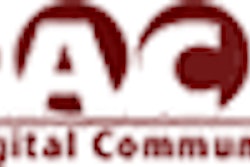AuntMinnie.com: What is the current state of the PACS market? What are the key trends driving or limiting its growth?
Douglas Tucker, Agfa: The market still has a fairly low amount of penetration, 15% to 20%, so there’s still lots of opportunity out there in the marketplace. Clearly we’re seeing that within radiology, PACS is being adopted as a way to increase business both now and in the future. There are always purchasing dollars available out there for that kind of investment. Technically, systems are becoming less risky.
One of the limiting factors for PACS is people, specifically IT personnel. PACS tend to be very knowledge-intensive systems to implement. While the Web does a great job at bringing knowledge around, PACS still requires a lot of specialized experience to operate and maintain, and that is very hard to come by today.
Caren Mason, eMed: The PACS market is in a growth phase. There are fewer radiologists today reading more imaging exams than ever before. They need ways to speed up the process of handling images. Also, radiology groups or departments are servicing broadening geographic regions. They need a faster and simpler means to communicate between facilities. As a result, the demand for teleradiology and wide-area network PACS is growing.
In addition, radiology practices face growing competition, not only from their own discipline, but also from other specialties such as orthopedics. Radiologists need to outservice their competition. But just as important, radiology must make it faster and easier for specialists to get the information they need. Networks and Web access can provide an answer to these challenges
As far as limiting factors, the cost of PACS, including life cycle and obsolescence costs, remain inhibiting forces. In addition, there needs to be more confidence that these technological solutions really work and can begin to make a difference for a healthcare organization in a short time frame. PACS needs to be simpler to use, install, and administer.
Vishal Wanchoo, GE: It’s a very healthy market, and it’s a global phenomenon. We’re seeing huge market growth, not just in the Americas, but also in Europe and Asia. The marketplace is convinced that PACS is the way to go.
The integration of information throughout the enterprise is a driving force in the market, allowing access to laboratory results and other pieces of clinical information. PACS is a technology that works; it’s no longer a hobby, it’s a tool for increasing productivity and lowering costs.
A big focus for our customers is how to reach out to the enterprise -- to the thousands of physicians that need radiology imaging data. Today almost every implementation that we do touches the enterprise in some form. We’re also having to provide the right solution for the image-viewing needs of referring specialties such as neurosurgeons and orthopedic surgeons.
Richard Hullihen, Marconi: It’s vigorous, and the purchasing activity seems to be going on across all segments of the market, not just in big hospitals. Manufacturers are now able to deploy solutions that meet customer expectations in a more well-rounded way; the systems are actually doing the things we’ve been telling people they would do with respect to productivity and costs.

This growth is being facilitated by the emergence of standards such as DICOM and IHE (Integrating the Healthcare Enterprise) for interoperability, as well as the participation of the information systems companies in helping to make it happen. Also, the PACS industry, even more so than medical imaging itself, gets to ride the technology wave associated with the overall information technology industry.
Rik Primo, Siemens: The PACS market continues to consistently show healthy two-digit growth. Existing PACS sites are expanding their departmental systems to enterprise-wide systems. In addition, community hospitals and imaging centers feel the need to improve efficiency in the radiology department and distribute images and reports electronically in and outside the hospital. PACS is also seen as the instrument to integrate imaging departments with related tertiary-care facilities.
Inhibiting factors are mainly financial issues. Two years ago there were still significant technical challenges and acceptance issues, but these are mostly gone.
Next page: How has the PACS purchasing process changed over the last few years?
Copyright © 2001 AuntMinnie.com



















